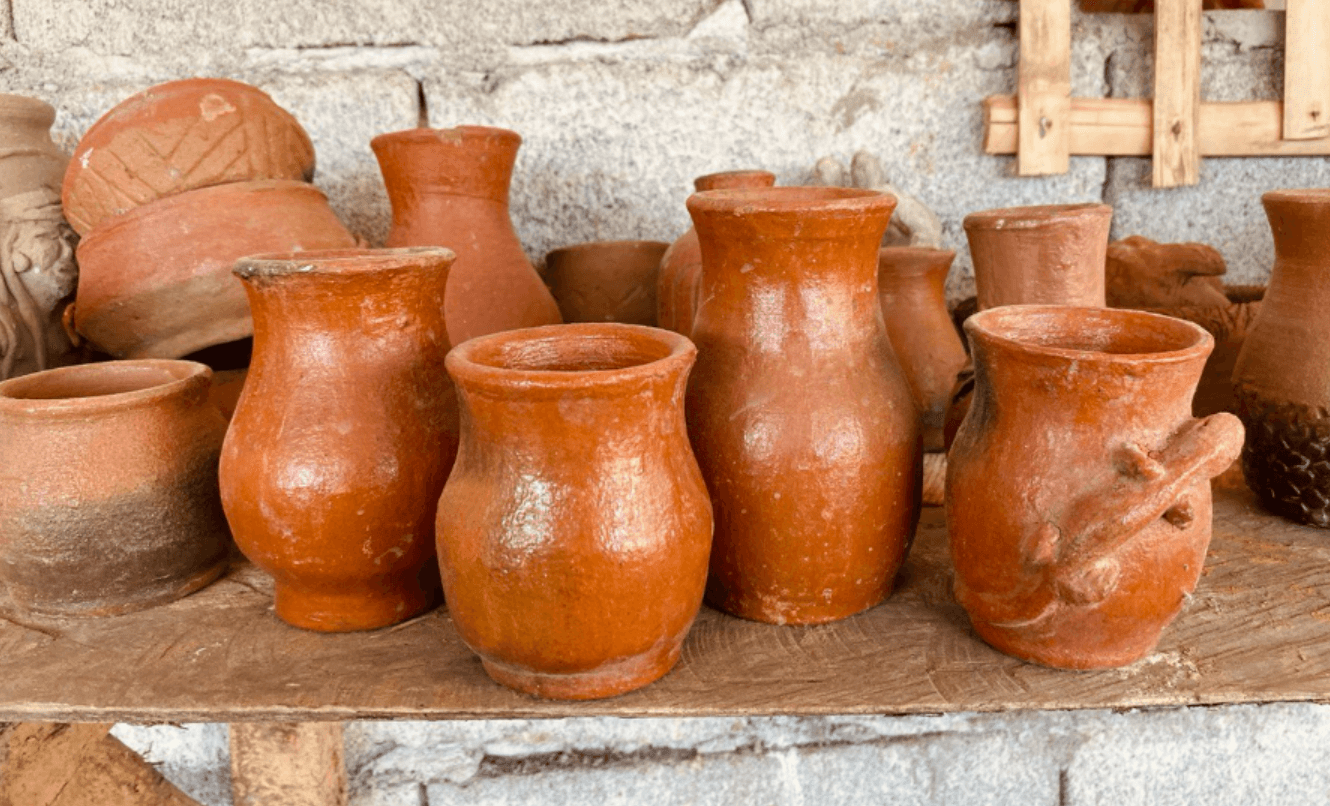SUMMARY
This is AI generated summarization, which may have errors. For context, always refer to the full article.

AKLAN, Philippines – Barangay Bari in Sibalom, Antique, is known for the exceptional quality and durability of its pottery. The skilled potters, known as maninihon, use a technique said to be unique to the village.
Nino Grantos, an experienced maninihon, told Rappler that just like all the potters in Bari, he uses a slipping solution, known as haraplas, to complete the final look of their pottery. It consists of fine red soil, often sourced in Lacaron, Sibalom. This will result in the distinctive rich dark red hue and shiny characteristic of Bari pottery after firing.

Precious material
Being the gemstone capital of the Philippines, Gratos said that Sibalom’s gemstones also contribute to the overall durability of their pots. “‘Yung sand noon ang sekreto sa pampatibay sa pots namin dito. Tumitibay ang clay ng Bari dahil diyan.”
(The sand of Sibalom is the secret of our durable pots. Bari clay becomes durable.)
Gratos said that based on his travel to other provinces in the country, Sibalom’s pottery technique is distinct.
“Meron din kaming compressing technique na tinatawag, dito lang talaga ‘yan sa Bari. Sa ngayon, wala pang fully upgraded na gumagawa noon, ako at ang anak ko lang ang gumagawa noon dito,” he said.
(We also have a compressing technique here, only in Bari. As of now, there’s no fully upgraded maker of it, only me and my son are the ones who make it.)

Passed down through generations
Gratos said that they didn’t get a formal education, that’s why they have lived as maninihon for years.
“Kahit wala kaming pinag-aralan, dito kami magaling. At alam yan ng mga potters din sa iba’t ibang probinsya sa Pilipinas,”
(Even if we didn’t have formal education, we are good at this pottery. And potters in different provinces know that.)
They sell products such as different pots, jars, stoves, vases, and figurines, which take 15 to 20 days to finish, depending on the weather.
“Bibilhin yan ng kapitalista dito ng P35 ang isa, para sa 15 araw na paggawa. Ibebenta na nila ‘yan ng P150 o mas mataas pa. Mababa talaga ang kuha nila sa amin kaso ganoon talaga eh,”
(The capitalists will buy one piece of stove at P35, for 15 or more days of work. They will sell it then at P150 or even higher. They really get it cheap from us, but that’s just how it works here.)
Quarrying woes
He also said that quarrying is a longstanding problem among potters in Sibalom, as these activities make their work even harder.
“Malaki talaga ang epekto nila sa amin. Wala kaming karapatang pagbawalan sila, kukuha lang sila nang kukuha ng buhangin sa ilog. Dobleng trabaho para sa amin kasi fine sand ang kinukuha namin. Kapag kumukuha sila, nagiging madumi ang nakukuha naming buhangin. Kung saan kami kumukuha at maganda roon, wala silang pakialam, kukunan din nila ‘yon. Kung ano ang natira, ‘yun na lang. Lilinisan na lang namin,”
(It really takes a toll on us. We have no right to restrict them, they just keep on getting sand from the river. It’s double work for us because we extract fine sand. When they gather sand, what we collect becomes dirty. They don’t care if it’s where we’re getting from, they’ll get from that area too. We’ll take what’s left, we’ll just clean it.)

Joel Arevalo, 58, president of the Bari Farmers and Potters Association, said in an interview with Rappler that Sibalom is blessed to have fine sand but now this resource is being abused by exporters.
“Kang uwa pa kato limit sang quarry diri sa Sibalom, gaexport ang Antique sang baras sa Taiwan kag China. Ang iban nga probinsya, ja man gabuol sang baras sa amun. Gakasamad lang ang amun uja nga tulay kato kay damo gid nga trucks ang gabuol sang baras diri,” he said.
(Before, when there’s no limit in quarrying in Sibalom, Antique exported sand in Taiwan and China. Other provinces also get their sand here. Our bridge collapsed before due to the number of trucks who get sand here.)
Hope for the future
Arevalo said that there are lots of skilled maninihon in Bari, but the elders barely know the value of their sand. They were only concerned about survival and making ends meet through pottery.
“Uwa man sanda kamaan bay sang manggad sa andang suba, maw ran nga wa gid sanda kasayod kung man-o it nami ang baras ujan,” he said.
(Our ancestors don’t know how precious their river is, that’s why they did not realize the quality of their sand.)
Meanwhile, Antiqueño youth Javie Barcinal said that the province of Antique has already provided pottery facilities for local artists. It is located in the University of Antique, a kilometer away from the Bari community.
“I believe that this allows not only contemporary artists to flourish but also community artists like our own maninihons, whose art stems from our ancestors. Their wisdom is more organic, and it is crucial to preserve it. Pottery serves as both a way of life and a livelihood for them,” Barcinal said. – Rappler.com
Jed Nykolle Harme is an Aries Rufo Journalism fellow.
Add a comment
How does this make you feel?





There are no comments yet. Add your comment to start the conversation.